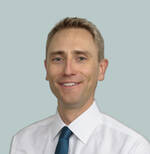 MedicalResearch.com Interview with
MedicalResearch.com Interview with:
Ania Z. Kielar, MD, FRCPC
Department of Radiology at the University of Ottawa
The Ottawa Hospital, Ottawa, Ontario,Canada
Medical Research: What is the background for this study? What are the main findings?
Dr. Kielar: One of the goals of imaging is to provide homogeneous and consistent, high-quality care for patients using available equipment. In our hospital system, we had two separate hospitals that merged to form one teaching centre over 15 years ago. Most processes and protocols are same between the two hospital sites as a result of having the same administration and the same University affiliation. Also, the same residents and staff rotate through the emergency departments and radiology departments at both hospitals. One variable that persists is the location of the CT scanner. At one center a space was created to place a CT scanner in the Emergency Department. At the other site, the CT scanner is in the radiology department. For non-trauma cases, we wanted to see if the difference in distance of the scanner with respect to the emergency department location, has a role in the time required to obtain CT scan from the time it is requested ,as well as the time to final patient disposition. We defined final patient disposition to include admission, subspecialty consultation or discharge home.
Medical Research: What are the main findings?
Dr. Kielar: We found that there was a statistically significant difference in the time between requested CT and time to completion of the CT between the two hospital sites. It was faster when the CT scanner was located in the emergency department. This was in the range of 16 minutes ,which is longer than simply the time required to walk over (and back) to the the CT scanner from the emergency department.
We also found a statistically significant difference in the time of the final patient disposition. Of note, there was no statistically significant difference noted in the time to obtain a CT scan as well as the preliminary radiology interpretation for patients with hyperacute conditions such as suspected abdominal aortic aneurysm rupture, regardless of the location of the CT scanner with respect to the ED.
(more…)






